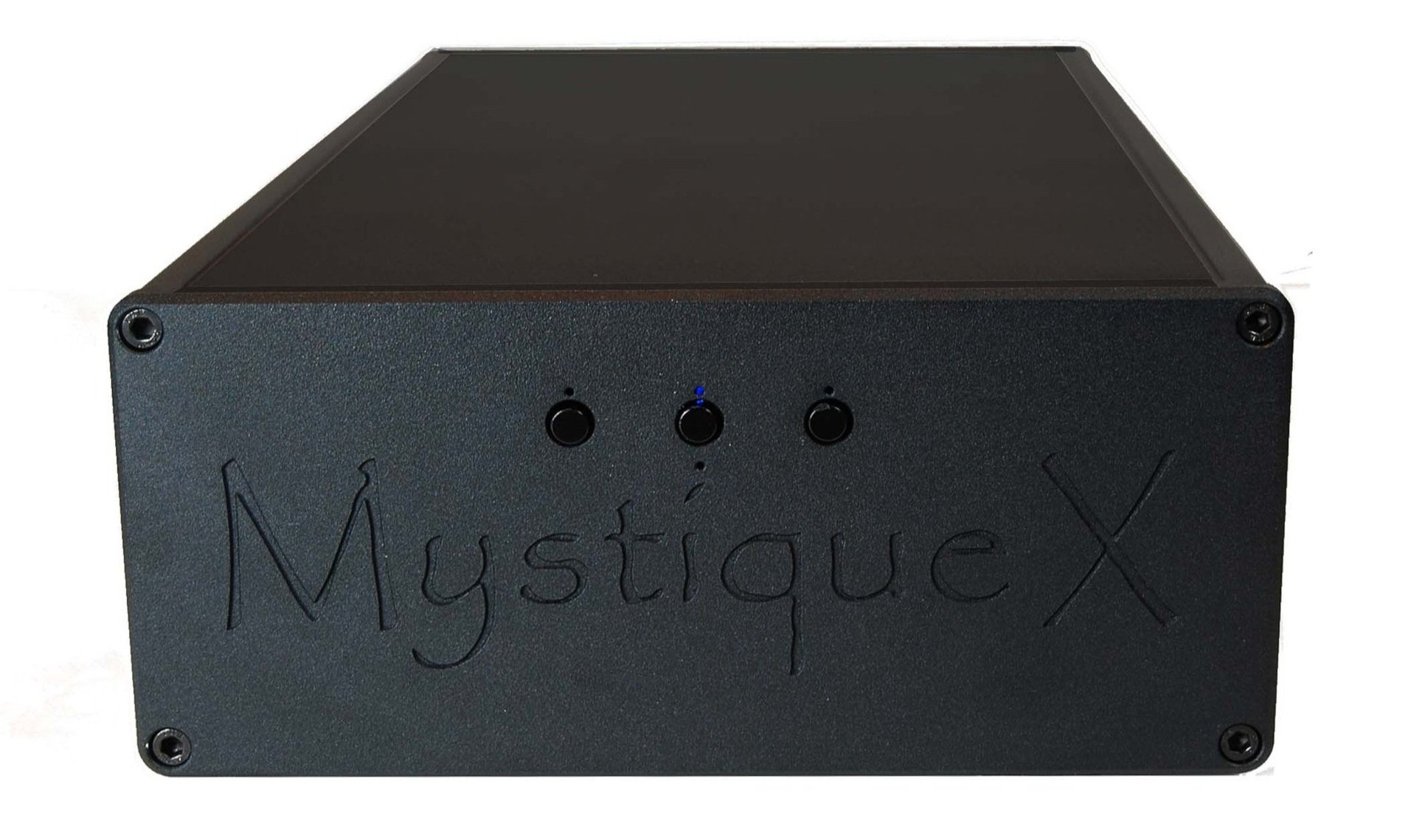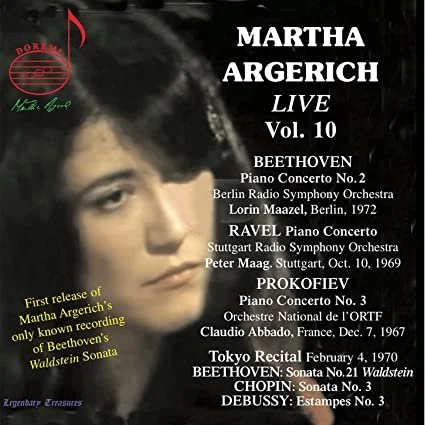MOJO AUDIO MYSTIQUE X SE DAC - REVIEW
MOJO AUDIO MYSTIQUE X SE DAC
Until last year, R-2R DACs were unknown to me. Unknown in the sense of having one I could engage with in extended listening sessions. All that changed last year. Since I’ve started writing for AKR, I’ve had not one, not two, but three R-2R DACs in da house. First it was the pleasing and capable Merason Frerot, then the quotidian but versatile MUSICIAN Pegasus. The Frerot impressed me with its amiable softness. It’s not the most accurate DAC but, for the price, it’s an excellent choice for those who have a peaky, “detailed” playback chain, or for all those who simply want a slightly low passed approach to music. The Pegasus can be coaxed to display more upper treble than the Frerot but still exhibits what I thought was an inherent characterteristic of R-2R architecture: a lack of true detail, both timbrally and in low amplitude subtlety. The Mojo Audio Mystique X SE has changed all that.
The Mystique X SE is, on first glance, an unassuming black box easily mistaken for a Class D power amp. It has no meters, knobs or displays. The only controls gracing the engraved, all black, anodized front fascia are three unlabeled push buttons and accompanying bicolor status LEDs. Inexplicably, there is also a red LED that indicates errors on the AES unbalanced input, but it’s under the USB input selector! The front panel does sport very prominent, deeply engraved Mystique X logotype but no labels whatsoever. Now I’m all for minimalist for the sake of sound quality, but no IDs for the buttons is a bit much. As an added touch, the product does not remember its prior setting when power cycled.
For a single box DAC, it’s quite heavy at 19 pounds. The Mystique X SE is also relatively bulky, with a 16" depth, 9" width and 4" height. The rear end has both AES balanced and unbalanced digital inputs, along with USB, and balanced and unbalanced analog outs. Though the manufacturer seems to prefer the unbalanced analog outputs, during this review I went solely with the balanced outs, while the DAC itself was driven by Amarra Luxe running on macOS.
To quote Mojo Audio’s web site, the X in the name “…stands for ‘extruded chassis.’ Our new massive extruded aluminum chassis combined with advanced anti-resonance typologies significantly lower mechanical resonance and thereby lower the overall noise floor of our new X series…It is the lower noise and better isolated power supply and shortest analog signal path in addition to our new extruded chassis and advanced anti-resonance typologies which lower our already incredibly low noise floor resulting in a higher level of performance than any DAC Mojo Audio has ever manufactured.” When I asked Benjamin Zwickel about sound quality differences between the now discontinued X and X SE versions, he opined that “…it would be like the difference between a 12-year-old and an 18-year-old bottle of the same whiskey; (X SE is) a bit smoother, a bit more character, a bit more subtlety and nuance.”
In addition to addressing mechanical sources of noise and intermodulation distortion, there are five power supplies dedicated to particular subsystems. In and of itself, multiple power supplies are not unusual, but, in the case of Mystique X SE, all are controlled by Belleson SPX ultra–low noise voltage regulators. In contrast to the now discontinued X edition, other improvements that the X SE carries are ultra–low noise rectification and additional EMI/RFI electromagnetic and radio frequency shielding.
Zwickel, electrical engineer, owner, and head honcho at Mojo Audio, sold his turntable in 1995 and “…went on a mission to find the ultimate digital source. It was not long before I learned the notable differences between R-2R and delta–sigma, and became a die hard R-2R fan.” Zwickel pointed out to me, via e–mail, that an R-2R architecture is the only topology to explicitly decode a digital audio stream. Delta-sigma converters interpolate and post–process the signal, then output a “…flawless waveform based on algorithms. Since the algorithms can’t tell the difference between emotional content from bit read errors, the analog output from Delta-Sigma is smooth and clean but also pasteurized, homogenized, and smoothed over IMO.” Built around Staccato Audio’s discrete Class A J-FET op(erational) amps following Analog Devices' venerable monolithic AD1862 R-2R ladder DAC, the Mystique X SE is a fully Class A, DC–coupled converter, with strategically employed Vishay Z-Foil resistors which minimize inherent self–inductance and capacitance, cryo–treated Kimber VSS VariStrand wire for peak power transfer, Rel-Cap polystyrene film and foil capacitors in the anti–image filter for superior transient response, low loss rhodium–plated Furutech RCA connectors, large size Herbie’s Audio Lab’s elastomer Soft Fat Dot anti–resonance footers, and a Swiss AC power module from Schurter. You may not recognize some or all of those brands and technologies, but be assured they were chosen after a great deal of critical listening, and represent a distinguished calibre for their category.
The Mystique X SE user manual suggests that, “For optimal performance and longevity, we recommend leaving our DACs on 24/7...that’s why the power switch is on the rear.” I understand the thought behind that statement, but my Anthropocene revulsion compels me to consider 20 minutes of warm up entirely sufficient. Speaking of power, Zwickel considers the power supply to be the most important factor in all audio electronics. He embraced an approach that smoothly delivers both voltage and current. Storing current requires large chokes as well as a robust capacitor bank. Here’s Zwickel’s analogy for understanding both voltage and current–delivering capacity: “Think of voltage as the width of a river and current as the speed the water is flowing. So if you are not storing current, as is true with nearly every DAC regardless of price, then the higher the energy required to reproduce a note the farther out of time that note is from other notes. The (Lundahl) LC choke-input power supplies we use in our analog power supplies are the largest, heaviest, most expensive, and least efficient power supply typology possible.”
For my listening evaluations, I mainly used the USB input. Along with all the premium parts mentioned above, the X SE employs JL Sounds’s USB–to–I2S input module. In macOS’s Audio MIDI Setup, it was nice to see the unit listed as “JLsounds Hi-Rez Audio 2.0”. I started things off with the wonderful follow up album by trad jazzers Rachael & Vilray. This year’s I Love A Love Song [Qobuz 88.2, Nonesuch] ends with a bonus track that had me boppin’ in time. The vocals on Let’s Make Love on This Plane are close mic’d but the “full band” behind them was not. The backing musicians were painted with the sound of the room in which they played. Mystique X SE lent that subtle sense of soundstage depth that only comes through with properly low jitter timing in both recording and playback.
A great player was recently lost to us; Geoffrey “Jeff” Beck. Beck’s last major project was his collaboration with Jonny Depp, 18 [Qobuz 48k, Rhino 2022]. On the Lou Reed cover, Venus In Furs, Depp’s vocal has the proper amount of close pickup, texturally appropriate condenser mic rasp. The new Mike Watt/Psychic Temple album, Plays Music for Airports [Qobuz 88.2k, Joyful Noise Recordings & BIG EGO Records 2023], encodes a very nice acoustic space. On track two, the almost 18 minute Music For Bus Stops, I thought, “The soundstage is totally believable except for the drummer. He is unrealistically wide.” By that I meant the drums occupy a very wide perspective, as if you were sitting two feet in front of the drum throne. On track two, it wasn’t until well into the performance that I realized…there are two drummers (!), which accounts for the ample spread of the trap drums.
On track 3 of Martha Argerich Live, Vol. 10 [Qobuz 44.1k, DOREMI 2023], there’s an interesting acoustical event at 29 seconds into the piece. What sounds like a rook comments on the proceedings. I had fallen into Deep Listening mode, and the real world sound effect made sense as it passed by, but then my analytical mind snapped me out of it and I stopped playback to rewind. Lesser converters do not nudge me into that immersive headspace. Speaking of lesser converters, I am compelled to compare the Mystique X SE to my beloved exaSound e22 Mk II for, without sonic comparisons, it’s devilishly difficult to discern strengths and weaknesses. At half the price and ancient by today’s standards, the ESS–equipped oversampling e22 DAC has served me well. I was not prepared for what I was hearing…a muddying of timbre, soundstage shrinkage and loss of that elusive character detail even at crazy high sample rates. Through the Mystique X SE, there was simply more “there” there. I now feel it’s time to up my reference DAC game!
When asked what it is that gives his DAC a uniquely even–handed, organic sound, Zwickel points up his combination of peerless old and new engineering, his technology crème de la crème. He cites the best of 100 year–old choke input power supplies, 40 year–old 20bit NOS (new, old stock) R-2R DAC chips, and modern additions including SiC (silicon–carbide) “zero–recovery” Schottky diodes, industry–standard USB receivers from XMOS, Vishay ‘naked’ resistors, and Lundahl amorphous core chokes for power, in along with Lundahl amorphous core input transformers for the AES audio inputs “…to get the natural and neutral sound you are hearing.” I have to applaud Zwickel for bringing together a package that had me reassessing everything I knew about digital–to–analog conversion in the home. Until Ms. Mystique slunk in on her sinuous gams, I had held Berkeley Audio Design’s† as the approach to take when looking for accuracy with musicality. Now, I have another more affordable choice among peers. The Mystique X SE combines the eternal precision of digital with the immortal soul of human performance. I concede, Benjamin’s karate is better. If you’re shopping for a “mid–tier” digital audio converter, you owe it to yourself to make a date with Mystique.
Mystique X SE D/A Converter
$9,999 direct
Mojo Audio Inc.
Albuquerque NM
www.mojo-audio.com
† — Berkeley Audio Design was formed in 2006 by the founders of Pacific Microsonics Inc., the inventors of the HDCD process. Their legendary Model 1 and Model 2 digital audio converters were, for several decades, the reference by which other pro audio converters were judged. If I remember correctly, the Model 2 was the first commercial converter set (A/D and D/A) to support the 4x, 176.4 and 192k sample rates mandated by the then new DVD-Audio standard. At the turn of the century, Pacific Microsonics and their HDCD process was acquired by Microsoft and, as is the case with much pioneering tech, summarily buried by the disinterested new owners.



